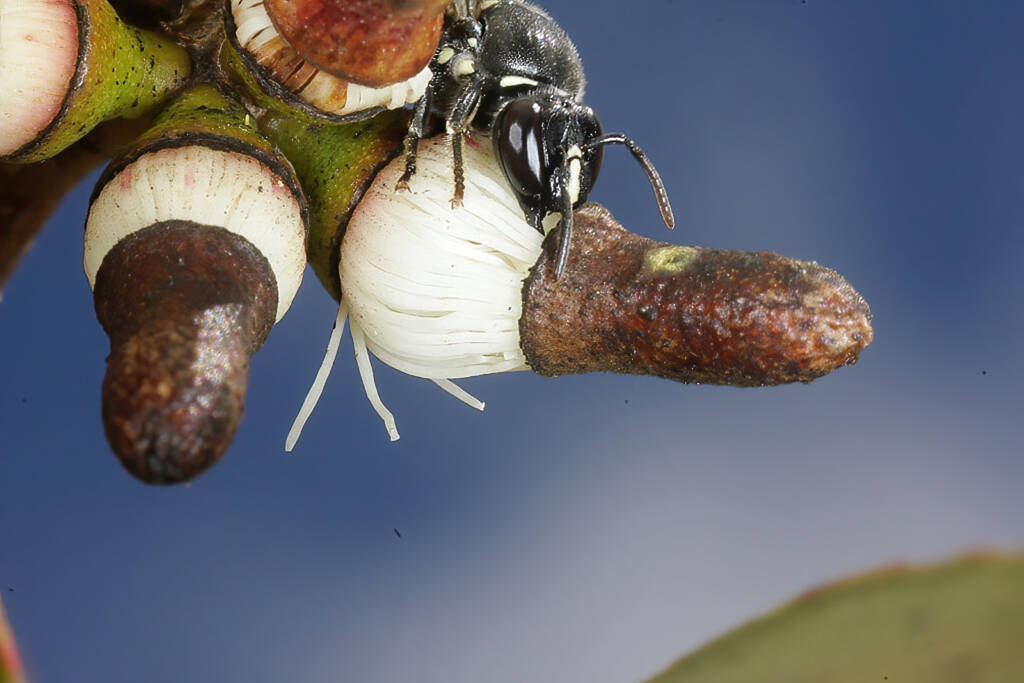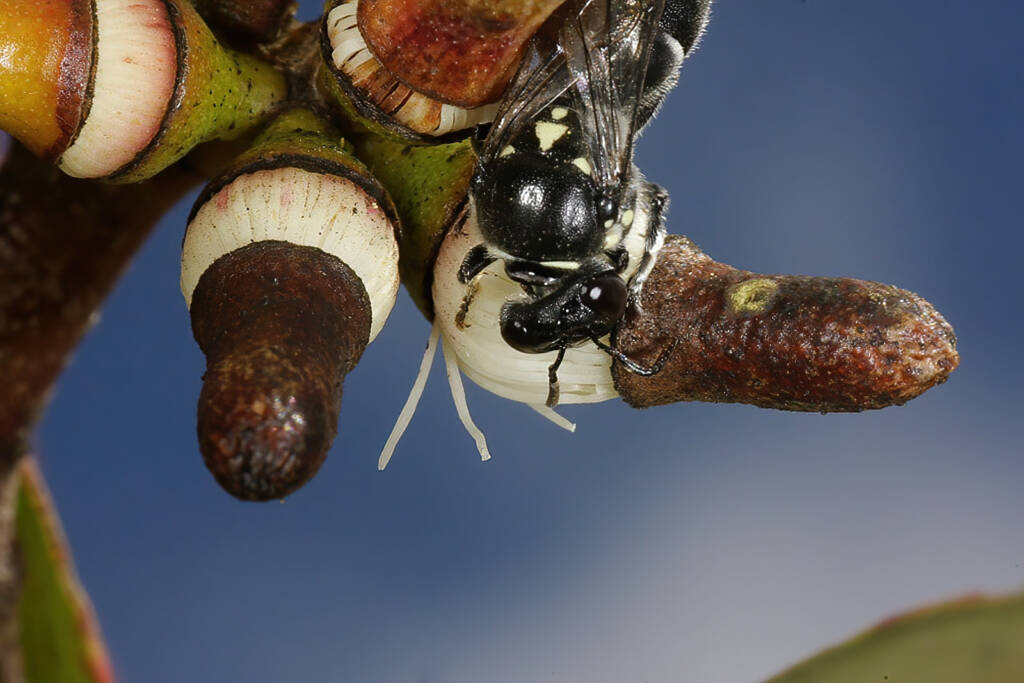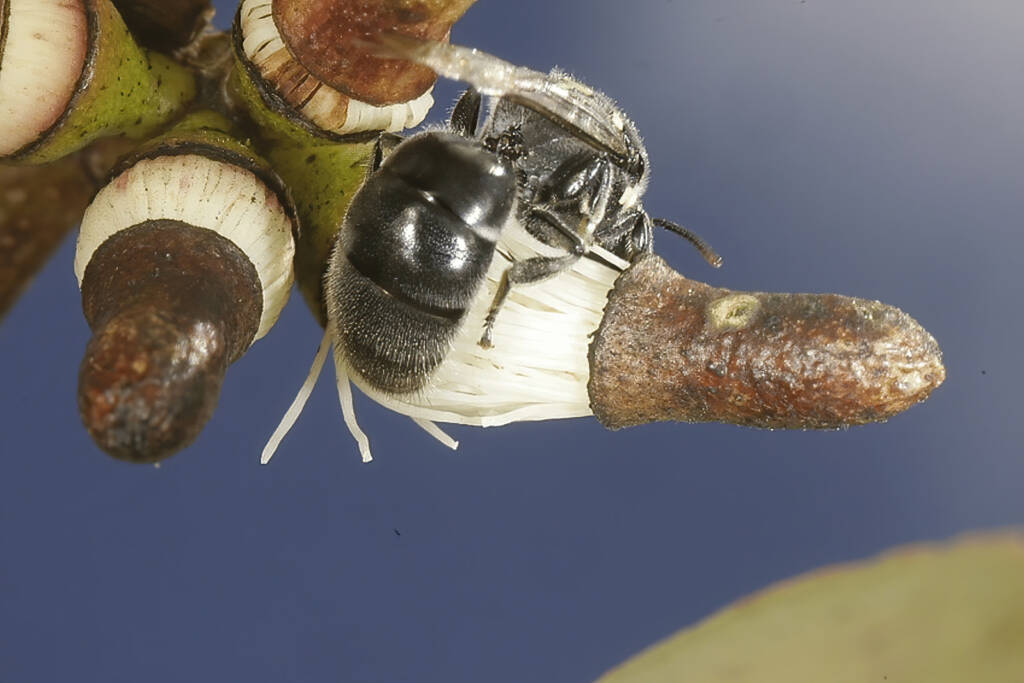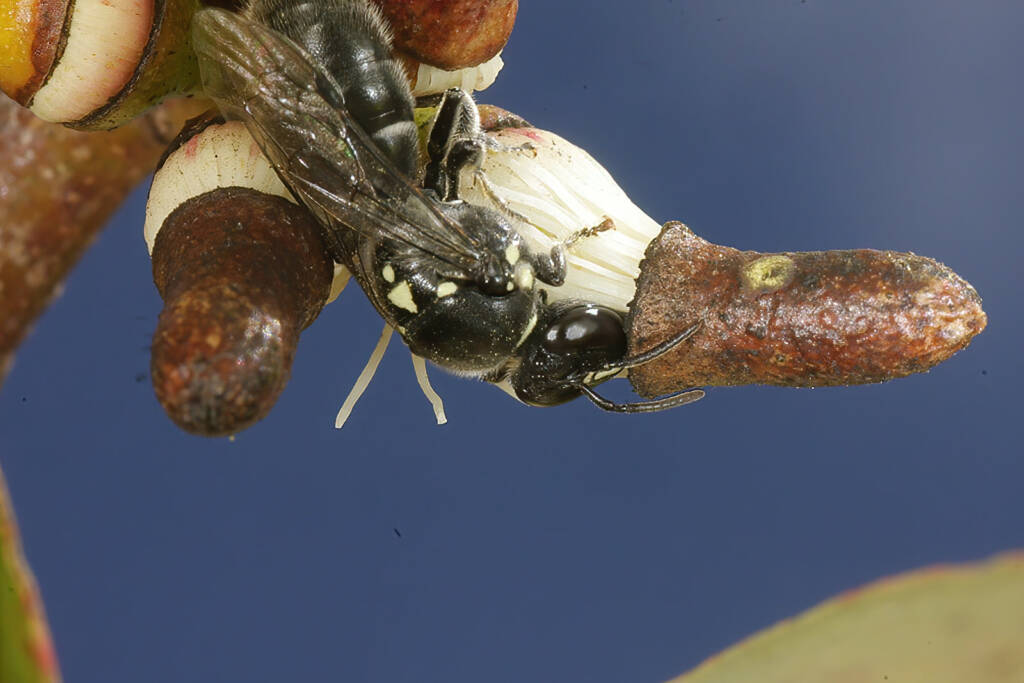Meroglossa impressifrons penetrataOpercula behaviour
Photographs by Marc Newman ◦
Australian native bees are important pollinators especially for Australia’s unique flora. When collecting pollen and/or nectar, they facilitate the pollination of the flowers. For some native bee species, it has been observed that instead of waiting for the opercula of the flowers to fall away, they actively lift and remove the individual operculum.
The operculum in flowering plants (also known as a calyptra), is the cap-like covering or “lid” of the flower or fruit that detaches at maturity. Opercula is the plural of operculum.
The species Meroglossa impressifrons penetrata has been documented lifting and removing the operculum of a flower to access the pollen. In the following series of photographs you can see the female Meroglossa impressifrons penetrata on a Eucalyptus infera removing a partially dehisced bud.
Note how she has the mandibles under the rim of the operculum.






Dehiscence, the definition of dehisce (also dehisced, dehiscing, dehisces, dehiscent) as pertaining to botany describes the splitting of a mature plant structure along a built-in line of weakness in order to release its contents. Sometimes this involves the complete detachment of a plant part, such as when the operculum falls away to reveal the anthers
Dehiscence is the splitting of a mature plant structure along a built-in line of weakness in order to release its contents. This is common among fruits, anthers and sporangia. Sometimes this involves the complete detachment of a part; structures that open in this way are said to be dehiscent.
- Scientific classification
- Kingdom: Animalia
- Phylum: Arthropoda
- Class: Insecta
- Informal: Pterygotes
- Order: Hymenoptera
- Superfamily: Apoidea
- Informal: Apiformes
- Family: Colletidae
- Subfamily: Hylaeinae
- Genus: Meroglossa
- Species: Meroglossa impressifrons
Footnote & References
- Photographs Meroglossa impressifrons penetrata, Ballandean, QLD © Marc Newman, Flickr, https://flickr.com/photos/koolbee/albums
- Newman, Marc & Jacobi, Bernhard. (2011). Operculum-lifting behaviour in the Eucalypt-visiting hylaeine bees Meroglossa impressifrons penetrata (SMITH, 1879) and Hylaeus (Hylaeorhiza) nubilosus (SMITH, 1853). Bembix. 5 – 12.
Meroglossa impressifrons penetrataOpercula behaviour
MeroglossaMeroglossa impressifrons Meroglossa rubricata
BeesBees Anatomy Bee Behaviour Blogging Bees… Bees – image index Amegilla Bee Apis mellifera Austroplebeia australis Austrothurgus Braunsapis sp Ceylalictus perditellus Colletidae Euryglossinae Exoneura Homalictus Hyleoides bivulnerata Lasioglossum Lasioglossum (Chilalictus) Lipotriches Megachile Meroglossa Stenotritidae Tetragonula Thyreus Xylocopa
